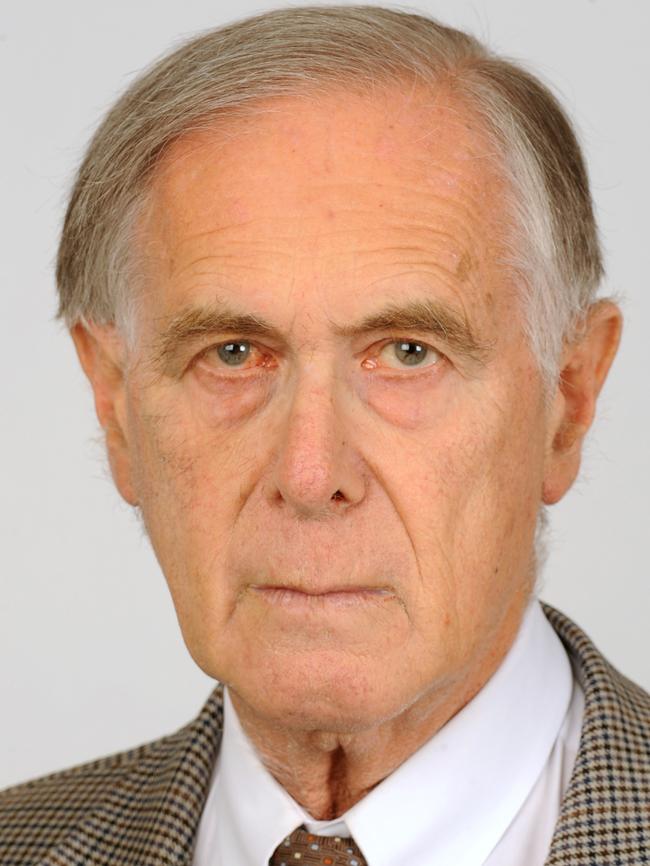Transforming Health plan may lead to heart deaths at Queen Elizabeth Hospital, warns cardiologist
AN eminent cardiologist warns plans to downgrade facilities at the Queen Elizabeth Hospital under Transforming Health may lead to unnecessary deaths of western suburbs residents from heart problems.

SA News
Don't miss out on the headlines from SA News. Followed categories will be added to My News.
HEART attack patients face a greater chance of death if cardiac services at the Queen Elizabeth Hospital are scaled back, one of the state’s most eminent cardiologists warns.
The director of cardiology at the Queen Elizabeth Hospital, Professor John Horowitz, warns a downgrading of cardiology services at the hospital under the Transforming Health reforms will result in vast amounts of money being wasted and ambulances being used to constantly ferry patients between hospitals at a time they are most vulnerable.
In a column written exclusively for the Sunday Mail, he says the planned closure of the QEH’s two cardiac catheterisation labs in favour of conducting all cardiac tests at the Royal Adelaide Hospital is a backward step for residents in the western suburbs.
Read Professor John Horowitz’ column below
“It will waste money on a grand scale, at a time when we can ill afford to be prodigal about health care spending. Wastage will include unnecessary ambulance transfers, and duplication of specialist care,” he writes.
“In the case of patients with heart attacks — about 150 per year being treated at QEH at present — it will delay onset of specialist treatment by 15 to 30 minutes per case, meaning larger heart attacks and a greater chance of death.”
He says the reforms will mean only patients with “shortness of breath, suggesting heart failure, are to be directed preferably” to the QEH — while those experiencing chest pains would be transferred to the RAH, presenting a challenge to paramedics as to the correct course of action.
And he warns the downgrade will lead to loss of high quality clinical and research staff. Prof Horowitz recently created controversy when describing Modbury Hospital as a “hell hole” that “should award T-shirts” to patients who survived treatment.
However, he told the Sunday Mail that the comments were part of the vigorous fight by medical staff to maintain world-class cardiology services at the QEH rather than being downgraded, as he says has happened at Modbury.
But Associate Professor Chris Zeitz, the clinical director of medicine at theCentral Adelaide Local Health Network, predicted the changes would result in more rapid treatment in emergencies. He said: “As outlined in Transforming Health — Next Steps released in March 2015, patients experiencing once-in-a-lifetime events such as strokes and heart attacks will be treated at the new RAH, Flinders Medical Centre and Lyell McEwin Hospital to ensure they receive best care, first time, every time.
“Cardiac patients from the central areas of Adelaide will be directly admitted to state-of-the-art emergency services available at the new RAH, where they will receive faster access to the care they need.
“Cardiac patients from the northern suburbs, who are currently transported to The Queen Elizabeth Hospital, will all be able to receive treatment much closer to home at the Lyell McEwin Hospital. Centralising acute cardiac services in the new RAH will also reduce the need to transfer acutely ill patients between hospitals ensuring patients have minimal disruption and stress during their initial recovery.”
Opposition health spokesman Stephen Wade said heart attack patients would have to travel farther, risking larger heart attacks and damage. “The plan will see a steady stream of ambulances up and down Port Rd transferring patients to get procedures they can currently get at the QEH,” he said.
It’s crazy, says cardiac victim
By Jade Gailberger
KEN Nicholson credits his former workmates and the Queen Elizabeth Hospital’s cardiac team for saving his life.

He was working at an Osborne factory five years ago when he suffered a massive heart attack.
“The guys at work revived me and it took about three or four goes on the defibrillator to bring me around,” said the 65-year-old Woodville resident.
Mr Nicholson’s main artery was totally blocked but police escorted his ambulance to the Queen Elizabeth Hospital where a rapid-response team had an operating theatre ready.
“They basically gave me a stent there and then at that time,” he said. “It was all very quick. But had it not been the QEH, if (the hospital) had have been farther, I don’t think I would have made it.”
Mr Nicholson said winding back cardiac services at the QEH, which would see the most seriously ill patients treated at the new RAH was “crazy”. “With a heart attack, especially what happened to me, it’s time (that’s an issue),” he said. “If the operating theatres are busy they’re not going to get seen to.”
Why it’s not just those in emergency who’ll suffer
By John Horowitz
THE building of the new Royal Adelaide Hospital has major implications for the continued availability of specialised services at other metropolitan hospitals, especially the Queen Elizabeth Hospital.

Once the new hospital opens, it is proposed that all patients experiencing chest pain, who would currently be assessed and treated at QEH, be taken to new RAH instead. This might involve ambulance redirection or secondary ambulance transfer from QEH.
Conversely, patients with symptoms predominantly of shortness of breath, suggesting heart failure, are to be directed preferably to QEH Emergency Department, again via secondary ambulance transfer if necessary.
Central to the functionality of all cardiology units is the availability of “cath labs” — cardiac catheterisation facilities used for complex diagnostic and therapeutic work on all categories of cardiac patients.
At present QEH has two cath labs and RAH three. The QEH labs have built up a reputation for functioning well at lower costs per procedure than those at RAH.
A critically important aspect of the current planning process is the intent to close the two QEH cath labs. This means that all QEH patients needing coronary angiography, stenting, pacemaker insertions and treatments for cardiac rhythm disturbances will need to be taken to new RAH, even if only for a few hours. This complicated and inefficient course of action is presented as a good idea, because it will result in very large numbers of procedures being performed at the new hospital.
However, the idea of closing the QEH cath labs is a bad one. It will waste money on a grand scale, at a time when we can ill afford to be prodigal about healthcare spending. Wastage will include unnecessary ambulance transfers and duplication of specialist care.
In the case of patients with heart attacks (about 150 per year being treated at QEH at present), it will delay onset of specialist treatment by 15 to 30 minutes per case, meaning larger heart attacks and a greater chance of death.
Of course, cath labs do not just treat heart attacks. For the past five years, the QEH Cardiology Unit has admitted about 3600 patients per annum, reflecting the high prevalence of heart disease in Adelaide’s western suburbs. Of these patients, about 1400 (almost 39 per cent) require procedures using the cath labs during their admissions.
Any loss of ability of the QEH Cardiology Unit to manage heart disease on site would have flow-on effects related to other functions of the hospital, including management of both medical and surgical disorders.
Overall, this would have a wideranging negative impact on healthcare in the region.
Apart from the added expense and inconvenience that the current plan will ensure, the restriction of cardiac services at QEH will also lead rapidly to a loss of trained clinical and research staff.
Let’s get the best result possible from building new RAH but let’s be very careful about what we are tempted to slash and burn in the process.
John Horowitz is the Director of Cardiology at QEH and Professor of Cardiology at University of Adelaide


